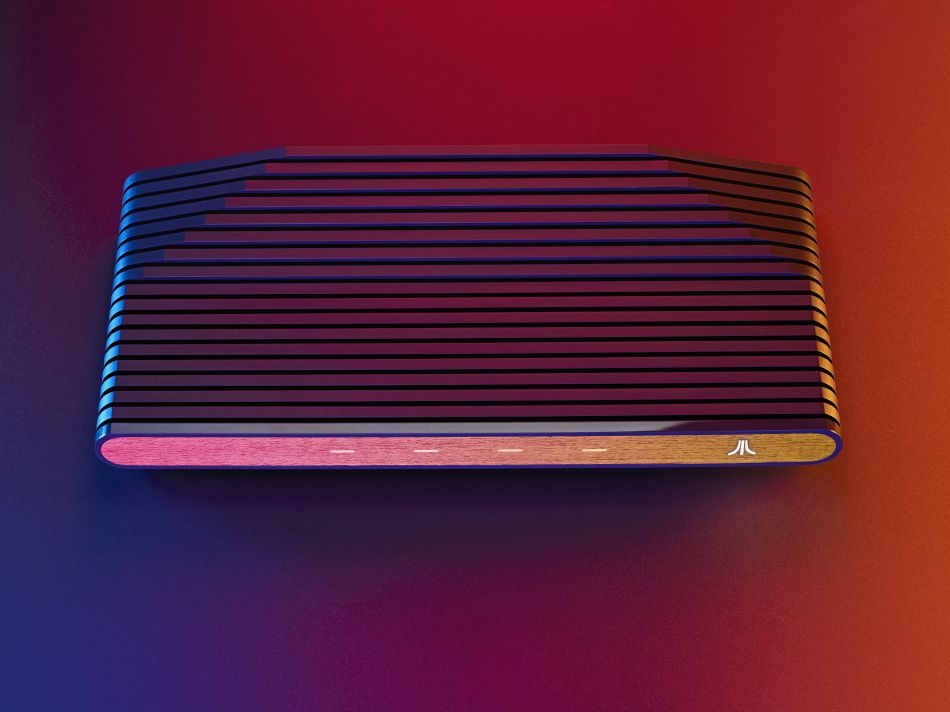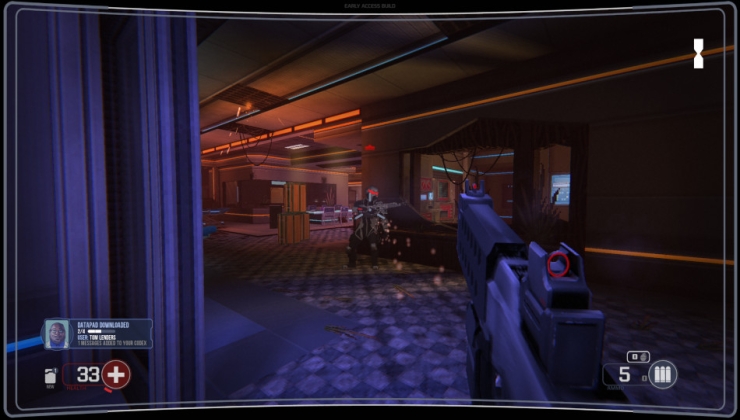Despite it still sounding a long way off, the Atari VCS console which will have a Linux-based OS along with the ability to boot another normal Linux distribution is coming along.
As a reminder, what was originally called the Ataribox was renamed the Atari VCS and eventually made it onto IndieGoGo where it raised a little over three million in funding.

In their latest post on Medium, they put out some thoughts from Rob Wyatt, the System Architect for the Atari VCS who previously worked on the Xbox, DirectX, Insomniac Games and more.
The post contains his thoughts on what they're currently doing with the system and some of it's quite interesting. It doesn't really sound like you're going to be able to install Ubuntu or anything directly onto it. Instead, it seems like it will need you to run things from a USB drive:
Something along the lines of: if you plug in a bootable external USB drive our hypervisor will boot from it, otherwise it will boot the internal Atari OS. This keeps both OS’s completely separate and makes supporting multiple OS’s really easy, there is no risk of the internal storage getting corrupted by the other OS.
They will eventually release example code showing exactly how to do this. To get to that stage though, they need to finish their own Atari VCS Linux distribution.
The post goes on to detail how they will support as many "standard APIs" as they can, including OpenGL and Vulkan. However, their actual work still seems quite early on, they even said it's rather "crude" right now. Their current aim, is to get all the Atari stuff to take up no more than 1GB of storage leaving the rest for users. However, they do have audio working via ALSA and apparently OpenGL and Vulkan rendering is already working.
At the end of the post, was this teaser:
What’s next? We want to announce a Linux open source project and encourage our backers, fans and interested parties to help us with something that will actually be part of the Atari VCS operating system. More on that soon.
I wonder what they're up to? Could be interesting. Will keep an eye on it.
I still have a lot of reservations about the Atari VCS but I'm keeping an open mind about it. If it's a hit, that's good for us since to be on it the game would need to support open standards and be little work to get on Ubuntu and other distributions. It's also nice to see them post so openly about what they're doing.
Quoting: elmapuli like the idea of the hypervisor, but i still think its an scam.
even if its not, sony will announce ps5 soon, microsoft may already be planing the next xbox and switch just launched, i'm afraid there is no rom for this thing, even if it have, it will not bring many new gamers to the table, we will have the ones who already play on ¹linux + the ²atari fans
¹(wich means we will not receive new games because the install base was not increassed and we will waste money on hardware wich have an cost per unit, instead of games)
²(there arent many anyway)
i think the Intellivision new console has an better proposal than this thing, at least its unique.
I guess it depends on what you consider Atari fans. Certainly there aren't really any for modern Atari (who used to be Infogrames). There are many of the Atari 8bit and ST line of computers, and certainly far more than that for the original VCS/2600.
So I can understand why they want to custom build a distro to suit the system and optimizing things, minimal problems down the line with users.
Or heck, just connect the controller over bluetooth, since the Steam Link already means network streamed games a tiny bit more latency (4-5ms) for the bluetooth stack won't be noticeable.
Of course, you should just be able to run the regular steam client in the other OS, but never hurts to support such things natively.
Quoting: AnanaceI just realized that if they collaborate with Valve a bit, this could make a great Steam Link device as well - seeing as they seem to be sunsetting that hardware, just write up a Steam Link app version for the Atari OS and add support for the native Steam Controller communication. (should be possible with a regular bluetooth chip and custom firmware as that's what the controller itself uses)I think the Steam Link is an ARM device, isn't it? So there would be needed some porting. But could be a nice minimal thing.
Or heck, just connect the controller over bluetooth, since the Steam Link already means network streamed games a tiny bit more latency (4-5ms) for the bluetooth stack won't be noticeable.
Of course, you should just be able to run the regular steam client in the other OS, but never hurts to support such things natively.
Quoting: slaapliedjeWhile the steam link is arm don't forget that the desktop client also supports streaming and that's x86. All they need to do is make a stripped down version of that.Quoting: AnanaceI just realized that if they collaborate with Valve a bit, this could make a great Steam Link device as well - seeing as they seem to be sunsetting that hardware, just write up a Steam Link app version for the Atari OS and add support for the native Steam Controller communication. (should be possible with a regular bluetooth chip and custom firmware as that's what the controller itself uses)I think the Steam Link is an ARM device, isn't it? So there would be needed some porting. But could be a nice minimal thing.
Or heck, just connect the controller over bluetooth, since the Steam Link already means network streamed games a tiny bit more latency (4-5ms) for the bluetooth stack won't be noticeable.
Of course, you should just be able to run the regular steam client in the other OS, but never hurts to support such things natively.
Quoting: ScooptaQuoting: slaapliedjeWhile the steam link is arm don't forget that the desktop client also supports streaming and that's x86. All they need to do is make a stripped down version of that.Quoting: AnanaceI just realized that if they collaborate with Valve a bit, this could make a great Steam Link device as well - seeing as they seem to be sunsetting that hardware, just write up a Steam Link app version for the Atari OS and add support for the native Steam Controller communication. (should be possible with a regular bluetooth chip and custom firmware as that's what the controller itself uses)I think the Steam Link is an ARM device, isn't it? So there would be needed some porting. But could be a nice minimal thing.
Or heck, just connect the controller over bluetooth, since the Steam Link already means network streamed games a tiny bit more latency (4-5ms) for the bluetooth stack won't be noticeable.
Of course, you should just be able to run the regular steam client in the other OS, but never hurts to support such things natively.
Yeah, but I mean how stripped down can you get compared to the Link? The Link does (if I recall) run a Linux kernel already. So yeah it wouldn't be hard to just port that. Though I think others have reported that their AMD based systems ran poorly with it, and the VCS is AMD based, so not sure where the streaming would be hardware accelerated at that point.
Either way, I ordered another Link, and I found a 'hack' online that tells you how to tweak the maximum throughput. I haven't tried it yet though.
Quoting: slaapliedjeInteresting? I have an AMD system but I don't stream my games to it since it's my primary gaming machine however I would think performance should be fine. I'd have a really hard time believing valve was doing anything weird enough to warrant a performance degredation like that. Also yes, the link does run Linux.Quoting: ScooptaQuoting: slaapliedjeWhile the steam link is arm don't forget that the desktop client also supports streaming and that's x86. All they need to do is make a stripped down version of that.Quoting: AnanaceI just realized that if they collaborate with Valve a bit, this could make a great Steam Link device as well - seeing as they seem to be sunsetting that hardware, just write up a Steam Link app version for the Atari OS and add support for the native Steam Controller communication. (should be possible with a regular bluetooth chip and custom firmware as that's what the controller itself uses)I think the Steam Link is an ARM device, isn't it? So there would be needed some porting. But could be a nice minimal thing.
Or heck, just connect the controller over bluetooth, since the Steam Link already means network streamed games a tiny bit more latency (4-5ms) for the bluetooth stack won't be noticeable.
Of course, you should just be able to run the regular steam client in the other OS, but never hurts to support such things natively.
Yeah, but I mean how stripped down can you get compared to the Link? The Link does (if I recall) run a Linux kernel already. So yeah it wouldn't be hard to just port that. Though I think others have reported that their AMD based systems ran poorly with it, and the VCS is AMD based, so not sure where the streaming would be hardware accelerated at that point.
Either way, I ordered another Link, and I found a 'hack' online that tells you how to tweak the maximum throughput. I haven't tried it yet though.
Quoting: ScooptaQuoting: slaapliedjeInteresting? I have an AMD system but I don't stream my games to it since it's my primary gaming machine however I would think performance should be fine. I'd have a really hard time believing valve was doing anything weird enough to warrant a performance degredation like that. Also yes, the link does run Linux.Quoting: ScooptaQuoting: slaapliedjeWhile the steam link is arm don't forget that the desktop client also supports streaming and that's x86. All they need to do is make a stripped down version of that.Quoting: AnanaceI just realized that if they collaborate with Valve a bit, this could make a great Steam Link device as well - seeing as they seem to be sunsetting that hardware, just write up a Steam Link app version for the Atari OS and add support for the native Steam Controller communication. (should be possible with a regular bluetooth chip and custom firmware as that's what the controller itself uses)I think the Steam Link is an ARM device, isn't it? So there would be needed some porting. But could be a nice minimal thing.
Or heck, just connect the controller over bluetooth, since the Steam Link already means network streamed games a tiny bit more latency (4-5ms) for the bluetooth stack won't be noticeable.
Of course, you should just be able to run the regular steam client in the other OS, but never hurts to support such things natively.
Yeah, but I mean how stripped down can you get compared to the Link? The Link does (if I recall) run a Linux kernel already. So yeah it wouldn't be hard to just port that. Though I think others have reported that their AMD based systems ran poorly with it, and the VCS is AMD based, so not sure where the streaming would be hardware accelerated at that point.
Either way, I ordered another Link, and I found a 'hack' online that tells you how to tweak the maximum throughput. I haven't tried it yet though.
What I had read was the streaming to the Link uses nvenc, which is missing on AMD systems, so they don't work as well. So it's specific to the streaming component, not AMD performance itself.
Quoting: slaapliedjeNVENC is a proprietary Nvidia technology. I doubt the link has that.Quoting: ScooptaQuoting: slaapliedjeInteresting? I have an AMD system but I don't stream my games to it since it's my primary gaming machine however I would think performance should be fine. I'd have a really hard time believing valve was doing anything weird enough to warrant a performance degredation like that. Also yes, the link does run Linux.Quoting: ScooptaQuoting: slaapliedjeWhile the steam link is arm don't forget that the desktop client also supports streaming and that's x86. All they need to do is make a stripped down version of that.Quoting: AnanaceI just realized that if they collaborate with Valve a bit, this could make a great Steam Link device as well - seeing as they seem to be sunsetting that hardware, just write up a Steam Link app version for the Atari OS and add support for the native Steam Controller communication. (should be possible with a regular bluetooth chip and custom firmware as that's what the controller itself uses)I think the Steam Link is an ARM device, isn't it? So there would be needed some porting. But could be a nice minimal thing.
Or heck, just connect the controller over bluetooth, since the Steam Link already means network streamed games a tiny bit more latency (4-5ms) for the bluetooth stack won't be noticeable.
Of course, you should just be able to run the regular steam client in the other OS, but never hurts to support such things natively.
Yeah, but I mean how stripped down can you get compared to the Link? The Link does (if I recall) run a Linux kernel already. So yeah it wouldn't be hard to just port that. Though I think others have reported that their AMD based systems ran poorly with it, and the VCS is AMD based, so not sure where the streaming would be hardware accelerated at that point.
Either way, I ordered another Link, and I found a 'hack' online that tells you how to tweak the maximum throughput. I haven't tried it yet though.
What I had read was the streaming to the Link uses nvenc, which is missing on AMD systems, so they don't work as well. So it's specific to the streaming component, not AMD performance itself.
Quoting: ScooptaQuoting: slaapliedjeNVENC is a proprietary Nvidia technology. I doubt the link has that.Quoting: ScooptaQuoting: slaapliedjeInteresting? I have an AMD system but I don't stream my games to it since it's my primary gaming machine however I would think performance should be fine. I'd have a really hard time believing valve was doing anything weird enough to warrant a performance degredation like that. Also yes, the link does run Linux.Quoting: ScooptaQuoting: slaapliedjeWhile the steam link is arm don't forget that the desktop client also supports streaming and that's x86. All they need to do is make a stripped down version of that.Quoting: AnanaceI just realized that if they collaborate with Valve a bit, this could make a great Steam Link device as well - seeing as they seem to be sunsetting that hardware, just write up a Steam Link app version for the Atari OS and add support for the native Steam Controller communication. (should be possible with a regular bluetooth chip and custom firmware as that's what the controller itself uses)I think the Steam Link is an ARM device, isn't it? So there would be needed some porting. But could be a nice minimal thing.
Or heck, just connect the controller over bluetooth, since the Steam Link already means network streamed games a tiny bit more latency (4-5ms) for the bluetooth stack won't be noticeable.
Of course, you should just be able to run the regular steam client in the other OS, but never hurts to support such things natively.
Yeah, but I mean how stripped down can you get compared to the Link? The Link does (if I recall) run a Linux kernel already. So yeah it wouldn't be hard to just port that. Though I think others have reported that their AMD based systems ran poorly with it, and the VCS is AMD based, so not sure where the streaming would be hardware accelerated at that point.
Either way, I ordered another Link, and I found a 'hack' online that tells you how to tweak the maximum throughput. I haven't tried it yet though.
What I had read was the streaming to the Link uses nvenc, which is missing on AMD systems, so they don't work as well. So it's specific to the streaming component, not AMD performance itself.
https://www.reddit.com/r/Steam_Link/comments/5315v0/higher_display_latency_when_using_nvenc/
Sure looks like it's an option.
Quoting: slaapliedjeThis sounds like he's streaming to a desktop machine with an nvidia card, not a steam link.Quoting: ScooptaQuoting: slaapliedjeNVENC is a proprietary Nvidia technology. I doubt the link has that.Quoting: ScooptaQuoting: slaapliedjeInteresting? I have an AMD system but I don't stream my games to it since it's my primary gaming machine however I would think performance should be fine. I'd have a really hard time believing valve was doing anything weird enough to warrant a performance degredation like that. Also yes, the link does run Linux.Quoting: ScooptaQuoting: slaapliedjeWhile the steam link is arm don't forget that the desktop client also supports streaming and that's x86. All they need to do is make a stripped down version of that.Quoting: AnanaceI just realized that if they collaborate with Valve a bit, this could make a great Steam Link device as well - seeing as they seem to be sunsetting that hardware, just write up a Steam Link app version for the Atari OS and add support for the native Steam Controller communication. (should be possible with a regular bluetooth chip and custom firmware as that's what the controller itself uses)I think the Steam Link is an ARM device, isn't it? So there would be needed some porting. But could be a nice minimal thing.
Or heck, just connect the controller over bluetooth, since the Steam Link already means network streamed games a tiny bit more latency (4-5ms) for the bluetooth stack won't be noticeable.
Of course, you should just be able to run the regular steam client in the other OS, but never hurts to support such things natively.
Yeah, but I mean how stripped down can you get compared to the Link? The Link does (if I recall) run a Linux kernel already. So yeah it wouldn't be hard to just port that. Though I think others have reported that their AMD based systems ran poorly with it, and the VCS is AMD based, so not sure where the streaming would be hardware accelerated at that point.
Either way, I ordered another Link, and I found a 'hack' online that tells you how to tweak the maximum throughput. I haven't tried it yet though.
What I had read was the streaming to the Link uses nvenc, which is missing on AMD systems, so they don't work as well. So it's specific to the streaming component, not AMD performance itself.
https://www.reddit.com/r/Steam_Link/comments/5315v0/higher_display_latency_when_using_nvenc/
Sure looks like it's an option.
Quoting: slaapliedjeWell, there was talk in the thread on here about the Steam Link that was saying that they didn't work as well on AMD cards due to lack of nvenc on them. That is where I got the information. I haven't bought a Radeon card since my 9250 I bought for my Amiga...AMD has its own technology called VCE. Whether valve uses it or not is another question entirely but usually VCE and NVENC are used for encoding video anyway not decoding it which is what the VCS would be doing. After all the steam link itself doesn't have an Nvidia or AMD GPU and therefore can't use either yet performance is fine.
Quoting: ImnotarobotQuoting: TobiSGDDepends on the USB. USB is not really designed to be running OS. It usually works quite bad from my experience.Quoting: kuhpunktLike if you try to use SteamOS and it would have to get all the game data through USB, that's not great.If it is USB 3 that shouldn't be a problem.
It's bad if you use USB 2.0 or older. With USB 3.x it's quite decent because the data transfer is bidirectional (unlike in older USB versions) and the speed is much improved. Here's my uptime for my current Linux Mint 19 Cinnamon session:
nicu@mint:~$ uptime
08:50:15 up 6 days, 8:25, 1 user, load average: 2,69, 3,31, 3,52Obviously, with a USB 3.x socket in the PC we must use USB 3.x storage devices if we want the proper speed.
As for my live session, I threw a lot at it, and the performance is good. I mean I installed multiple software, including QEMU to test the latest SliTaz release in a virtual environment. And then I watched movies, edited images, did some programming, "tortured" the system with a lot of software open and running simultaneously, and my PC is simply a Core i3-6320 (Skylake), but it has 32GB RAM - which is essential for live sessions.
Here's a screenshot with Firefox and multiple Chrome windows open, with a lot of tabs and 2 mixer streams running, plus LibreOffice Writer+Calc, TeamViewer and other stuff going on. Testing the limits is quite fun. :D
On-topic, I have mixed feelings about what Atari does with this project, but I think it's only fair to let them to their thing and come up with opinions later. So far I've been disappointed enough to criticize the stunts they pulled, and their lack of professionalism in various areas, but this is something even projects with large teams can "produce", so I'll just wait and see where this goes.








See more from me